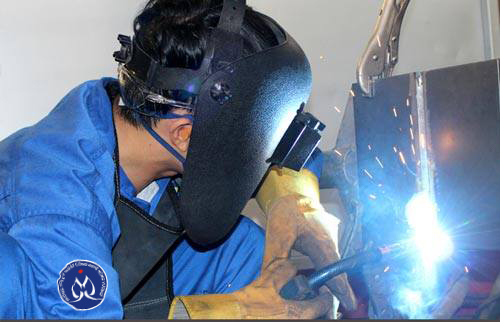Circular 47/2018/TT-BLDTBXH: General Introduction to the Welding Field at College Level
On December 28, 2018, the Ministry of Labour, Invalids and Social Affairs (Bo Lao Dong - Thuong Binh va Xa Hoi - BLDTBXH) issued Circular 47/2018/TT-BLDTBXH stipulating the minimum knowledge volume and competency requirements that learners must achieve upon graduation at the intermediate and college levels in the fields of mechanical engineering technology.

General Introduction to Welding at College Level - Illustrative Image
As stipulated in the minimum required knowledge volume and competency requirements for learners after graduation at the intermediate and college levels in the welding industry, issued together with Circular 47/2018/TT-BLDTBXH, welding at the college level is an occupation where practitioners perform the tasks of joining metal parts into a cohesive, inseparable joint using heat sources, pressure, or both, with or without the use of additional metals, meeting the requirements of Level 5 in the Vietnam National Qualifications Framework.
The welding process often involves localized heating, leading to stress and deformation; the equipment used in welding may utilize various energy forms such as: electrical energy, light energy, chemical energy, fuel, mechanical energy, kinetic energy, ultrasonic vibrations, etc. The welding process can be performed manually, semi-automatically, or automatically.
Welds can be made in all spatial positions, and welding work can be carried out in workshops, at construction sites, or directly on assembled structures. Fabricating products through welding has many advantages over other mechanical processing methods; welding can link all metals and alloys, and can link two different metals, making welding-produced products relatively cost-effective and yielding high economic efficiency. In modern times, welding equipment is highly automated, and welding materials and technologies are more advanced, significantly reducing labor force requirements, thereby offering numerous benefits for welding workers.
Minimum required knowledge volume: 2,500 hours (equivalent to 90 credits).
Moreover, after graduation, learners will have the competence to meet the requirements of various job positions in the industry, including:
- Structural welding;- Process piping welding;- Gas welding;- Special welding;- Welding quality management and oversight;- Welding quality assurance.
For detailed regulations, see Circular 47/2018/TT-BLDTBXH, effective from February 10, 2019.
Le Vy
- Responsibilities of officials of the Ministry of Finance of Vietnam when they are issued Official Passports from November 19, 2024
- 06 solutions to enhance the effectiveness of social policy credit in the new phase in Vietnam
- Financial support level for the purchase and repair of transportation vehicles for the Economic - National Defense Corps in Vietnam from December 30, 2024
- Financial support levels for purchasing and repairing of medical equipment for the Economic - National Defense Corps in Vietnam from December 30, 2024
- Latest regulations on management and use of passports for officials and public employees of the Ministry of Finance of Vietnam
- New regulations on the procedures for veterinary sanitation inspection in Vietnam from January 6, 2025
-

- Responsibilities of officials of the Ministry ...
- 16:00, 23/11/2024
-

- 06 solutions to enhance the effectiveness of social ...
- 15:32, 23/11/2024
-

- Guidelines for registration and organization of ...
- 11:53, 23/11/2024
-

- Contents of audit service quality control in Vietnam
- 11:00, 23/11/2024
-

- Acts in violation of Law on Independent Audit ...
- 10:30, 23/11/2024
 Article table of contents
Article table of contents
